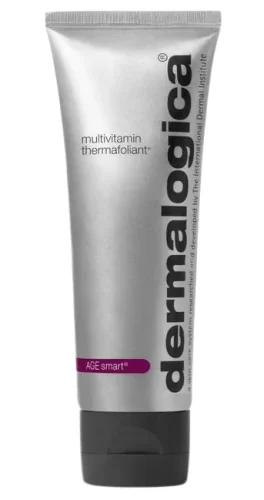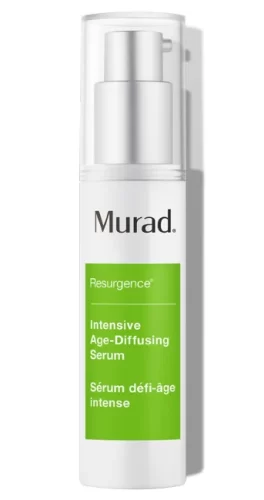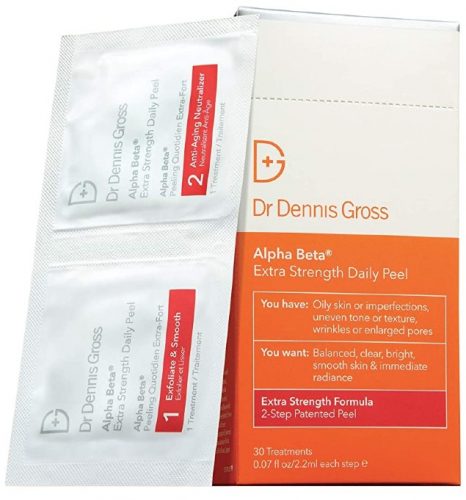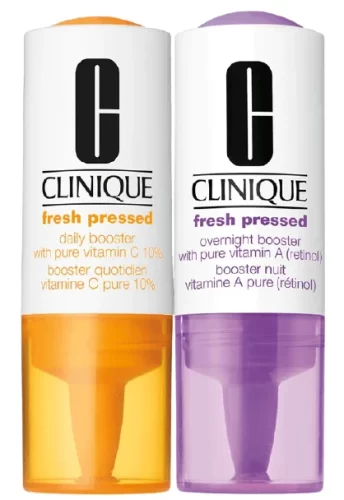In a world of skincare cocktails, where mixing ingredients is a daily thing, you have to be equipped with every detail about the actives you’re going to slather on your face, which can be quite challenging. Mixing the wrong ingredients can turn into a fiasco, causing irritation, dryness, or canceling each other out, rendering your products ineffective. Considering salicylic acid and retinol are two of the most potent ingredients in skincare, it’s fair to assume you can’t use them on the same day, but guess what? You surely can, and this post reveals the how-to so you can tackle your blackheads and pimples without worrying about bad reactions.
Retinol vs. salicylic acid
Retinol is a vitamin A derivative that can improve a wide array of skin issues. This is thanks to its ability to boost cell turnover, meaning it sloughs off dead cells to leave room for new, healthy ones. In turn, this comes with a long list of benefits, including thickening the skin, unclogging pores, balancing sebum, evening tone, and encouraging pimple healing. Moreover, retinol supports collagen production, which aids in diminishing scar look, and induces hyaluronic acid production.[1] For these reasons, but also for its anti-inflammatory and antimicrobial activities, retinol is touted as one of the best acne treatments.[2]
On the other hand, salicylic acid is a beta-hydroxy acid (BHA) popular for its acne-fighting abilities. Since it’s lipid-soluble, salicylic acid penetrates the outermost skin layer, where it dissolves the debris and oil that clog pores. At the same time, salicylic acid exfoliates dead cells from the skin’s surface, speeding up pimples’ healing and preventing the formation of new ones.[3]
At a closer look, it’s crystal clear retinol and salicylic acid have some things in common: they shed away dead cells, unclog pores, have anti-inflammatory effects and smoothen skin. Also, both have small molecular weights, meaning they penetrate beneath the epidermis to trigger significant changes. This takes us to the next question:
Can you use salicylic acid and retinol together?
Yes, you can use salicylic acid and retinol together as long as your skin tolerates them. They work in tandem to treat acne, smooth rough texture, and promote cell renewal, translating into a clearer and firmer complexion.
However, to make sure you dodge any skincare pitfall, avoid layering them one after another if the products you use contain meaningful concentrations of salicylic acid and retinol. As both actives exfoliate, they can weaken the skin’s barrier and increase sensitivities. Don’t quit yet. There is still a way to use salicylic acid and retinol together.
How to use salicylic acid and retinol on the same day?
You can use salicylic acid and retinol on the same day by applying them at different times. And since the sun breaks retinol down and makes skin photosensitive, leave it for your PM routine. As such, use your salicylic acid serum in the morning. Voilà! You get double benefits while mitigating chances of irritation by alternating salicylic acid and retinol: the former in the morning and the latter at night.
There’s an exception, though. If you use a salicylic acid cleanser or toner, you can apply your retinol treatment afterward. Cleansers and toners usually contain low concentrations of actives, thus it’s unlikely to interfere with retinol and cause irritations.
P.S: Since both salicylic acid and retinol tend to dry the skin, ensure you don’t let your complexion parched. Pick one of these moisturizers to use after retinoids. And apply sunscreen daily.
Yet, another way to safely use salicylic acid and retinol together is to have them compounded in one product. We love these ones:
Dermalogica Multivitamin Thermafoliant

This skin polisher is pretty potent as it features salicylic acid and retinol among the first ingredients and promises to refine texture, decongest pores and enhance product absorption. Dermalogica Multivitamin Thermafoliant also uses resurfacing micro granules to help shed away dead skin buildup, oil, and dirt, helping prevent pimple formation. Two or three times a week, layer this exfoliant on damp skin and massage in gentle circular motions for 2 minutes, then rinse with lukewarm water.
Murad Intensive Age Diffusing Serum

This serum is ideal for helping skin regain thickness and combat dehydration which ironically may lead to excess sebum. The mix of alpha-hydroxy acids, salicylic acid, and retinol aid in smoothing and retexturizing skin while unclogging pores, and humectants replenish water levels, balancing oil. Its texture is lightweight and absorbs fast, never leaving skin greasy but hydrated and plump.
Dr. Dennis Gross Extra Strength Daily Peel

Dr. Dennis Gross’s two-step daily peel pads are soaked in actives that reveal a smooth, hydrated, and youthful complexion — one of the best ways to use salicylic acid and retinol together. The first step infuses the skin with glycolic, salicylic, mandelic, and lactic acids to reduce acne scars and pores look, while the second step is pre-dosed with retinol, resveratrol, adenosine, and copper for skin-strengthening benefits.
Clinique Fresh Pressed Overnight Booster

Salicylic acid and retinol meet in this booster to resurface your skin and get it in its best condition while you sleep. The formula is also supported by plant extracts that have anti-inflammatory benefits, plus cholesterol and peptide to reinforce the barrier.
Sources
Women’s Concepts uses reliable sources, including dermatologists’ insights, clinical trials, and scientific journals, to find accurate information and support all the facts shared in our articles. All statements and claims have clear and legit references. Read our editorial policy to learn more about our sources of information, our process of researching and fact-checking the content, and how our team strives to keep all articles updated, completed, and trustworthy.
- Li WH, Wong HK, Serrano J, Randhawa M, Kaur S, Southall MD, Parsa R. Topical stabilized retinol treatment induces the expression of HAS genes and HA production in human skin in vitro and in vivo. Arch Dermatol Res. 2017 May, https://pubmed.ncbi.nlm.nih.gov/28247017/
- Leyden J, Stein-Gold L, Weiss J. Why Topical Retinoids Are Mainstay of Therapy for Acne. Dermatol Ther (Heidelb). 2017 Sep, https://www.ncbi.nlm.nih.gov/pmc/articles/PMC5574737/
- Journal of the American Academy of Dermatology, A double-blind, placebo-controlled evaluation of a 2% salicylic acid cleanser for improvement of acne vulgaris, https://www.jaad.org/article/S0190-9622(12)01331-X/fulltext


